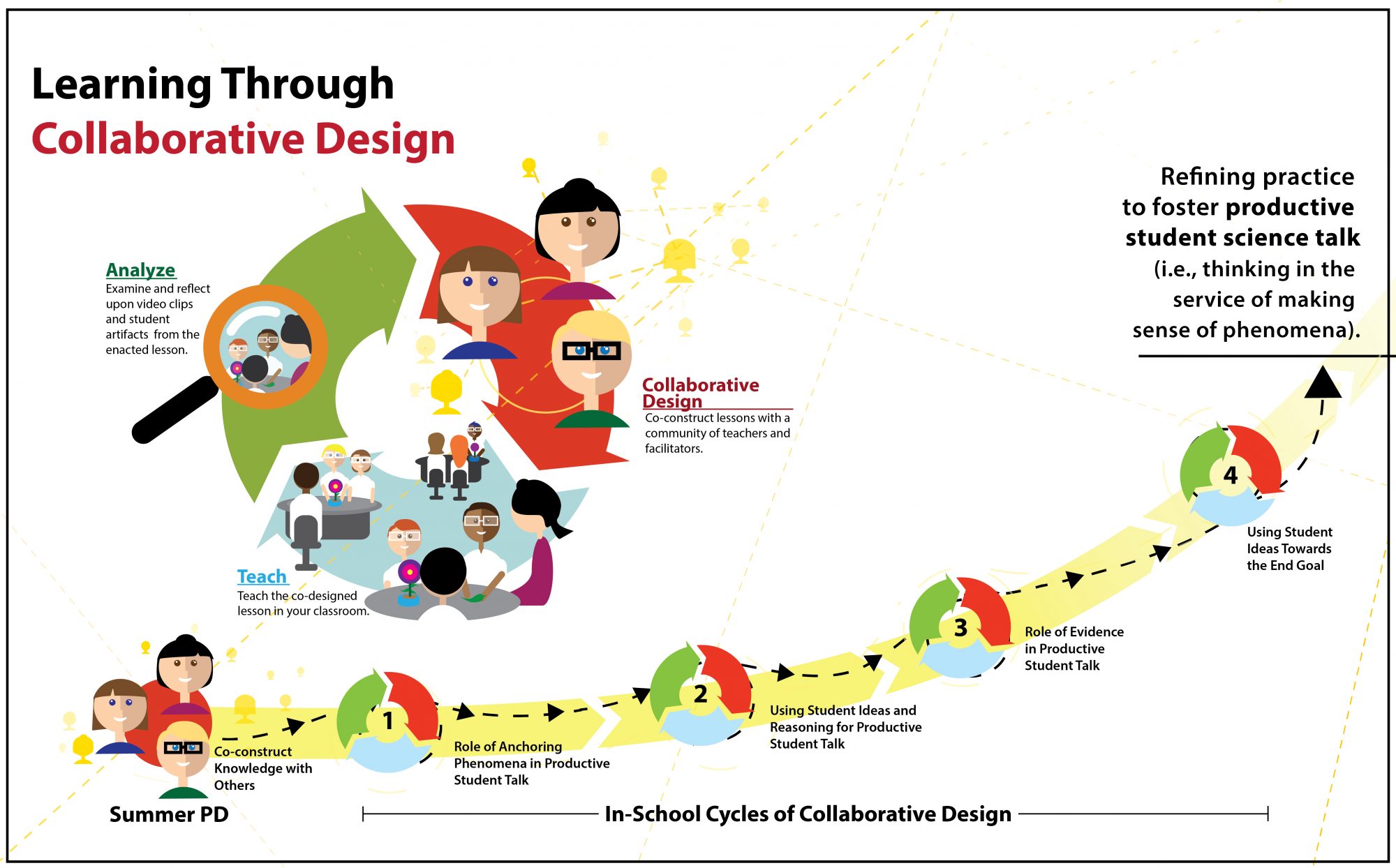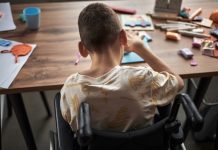Sierra Morandi, Jennifer Schellinger and Sherry A. Southerland from Florida State University, shed light on science education reform efforts in the U.S.
Science education reform efforts in the U.S. call for science classrooms to become spaces where students’ ideas are emphasized, and they use them to construct explanations of scientific phenomena. For these efforts to become a reality, teaching practices that enhance students’ sensemaking through talk are vital. Florida State University and Georgia State University are working towards these efforts by investigating how teachers can be supported to develop the skills necessary to adopt reformed aligned instructional practices through a professional development project: Learning through Collaborative Design-PD.
Learning science by talking science
Science education reforms in the U.S. emphasize the importance of students engaging in the development of explanations of natural phenomena as a central vehicle for learning. To meet this call, the National Research Council’s Framework for K-12 Science Education calls for students to be positioned to “figure things out” and conceptually engage in science through three-dimensional learning. The three dimensions that make up this framework focus on the (1) disciplinary core ideas or key ideas that make up each disciplinary area of science, (2) cross-cutting concepts, which focus on connections across science disciplines, and (3) scientific practices, which allow students to engage in the work of scientists and the processes they use to investigate the natural world. Engagement in these three dimensions, as students work to make sense – work that is often done through productive talk – supports students in building a robust and cohesive understanding of science.
Productive talk, defined broadly as discussions that are centered on the generation and evaluation of scientific knowledge, is critical to student sensemaking. However, teachers often have minimal experience with the skills and tools needed to engage students in this talk. Collaborative design, or working with one’s peers to design, revise, and negotiate changes in curricular materials, may be one way to shift teacher thinking and practice to support students’ sensemaking through talk. The importance of collaborative design in teacher learn- ing remains an open question, with much of the research to date focusing on curricular modifications teachers make, and little focus on how collaboration changes the knowledge, learn- ing, and practice of teachers.
The National Science Foundation-funded project, “Learning through Collaborative Design – Professional Development” (LCD-PD) was born out of a need to understand the influence of collaborative design activities in supporting teacher learning about fostering productive talk, as well as exploring the influence this talk has on the learning of their students. LCD-PD comprises of a team of science education researchers and PD experts from Florida State University and Georgia State University working together to develop this understanding.
The comparison field study
To investigate the role of collaborative design in teachers’ learning, LCD-PD explored two models of PD, one including collaborative design and one including an approach infused with practice, both having a central focus on supporting students to engage in productive science talk. Both models consisted of a six-day, 36-hour summer experience and a subsequent multi-session component that occurred across the academic school year (in-school). The LCD model focused on supporting teachers to work collaboratively in designing, enacting, and analyzing lessons that featured students’ productive talk (Figure 1). Both the summer and in-school components focused on fostering teachers’ skills and relationships with their collaborative partner(s) through spaces of reflection. The comparison model, Learning Through Participation (LTP-PD), was structured much in the same way to support teachers’ learning of the skills and knowledge necessary to implement productive talk in the science classroom. However, the LTP model did not emphasize collaborative design and revision of curricular materials.

To understand the impact of both PDs, student learning outcomes related to scientific reasoning across LCD-PD and LTP-PD were compared.Thirteen teachers, seven from LCD-PD and six from LTP-PD and their students from two biology classes (N = 274) are the focus of the research shared here. Student learning was measured using the Assessment of Biological Reasoning (ABR), an assessment of scientific reasoning developed and validated by the LCD-PD team. The ABR was administered at the start of the school year (pre-test) and the end of the school year (post-test).
The results indicate that there were significant increases in ABR scores from pre to post for students across both the LCD-PD and LTP-PD groups. While all students improved in their ABR scores, students in classrooms taught by an LCD-PD teacher had significantly higher post scores than students in LTP-PD classrooms.
These findings suggest that the intentional collaborative design activities afforded teachers valuable opportunities to consider and incorporate students’ ideas as intellectual resources, while also being attentive to the questioning approaches they used while implementing the designed activities. That is not to say the teachers from the LTP-PD experience did not consider students’ ideas as intellectual resources. However, teachers intentionally working with others as they synthesized these elements while revising existing materials heightened their awareness of the importance of students’ intellectual resources as they implemented the lessons.
In closing, findings from this research show that when teachers adapted and redesigned existing curricular resources around productive talk collaboratively, their students show greater improvement with scientific reasoning. Ultimately, the PD strategies devised as part of LCD-PD can help teachers gain the skills and knowledge needed to support student talk as they sensemake in science, and the identification of the importance of teacher collaborative design can inform the design of other teacher professional development efforts.
More about LCD-PD
For more information on the LCD-PD project click here.

This work is licensed under Creative Commons Attribution-NonCommercial-NoDerivatives 4.0 International.











